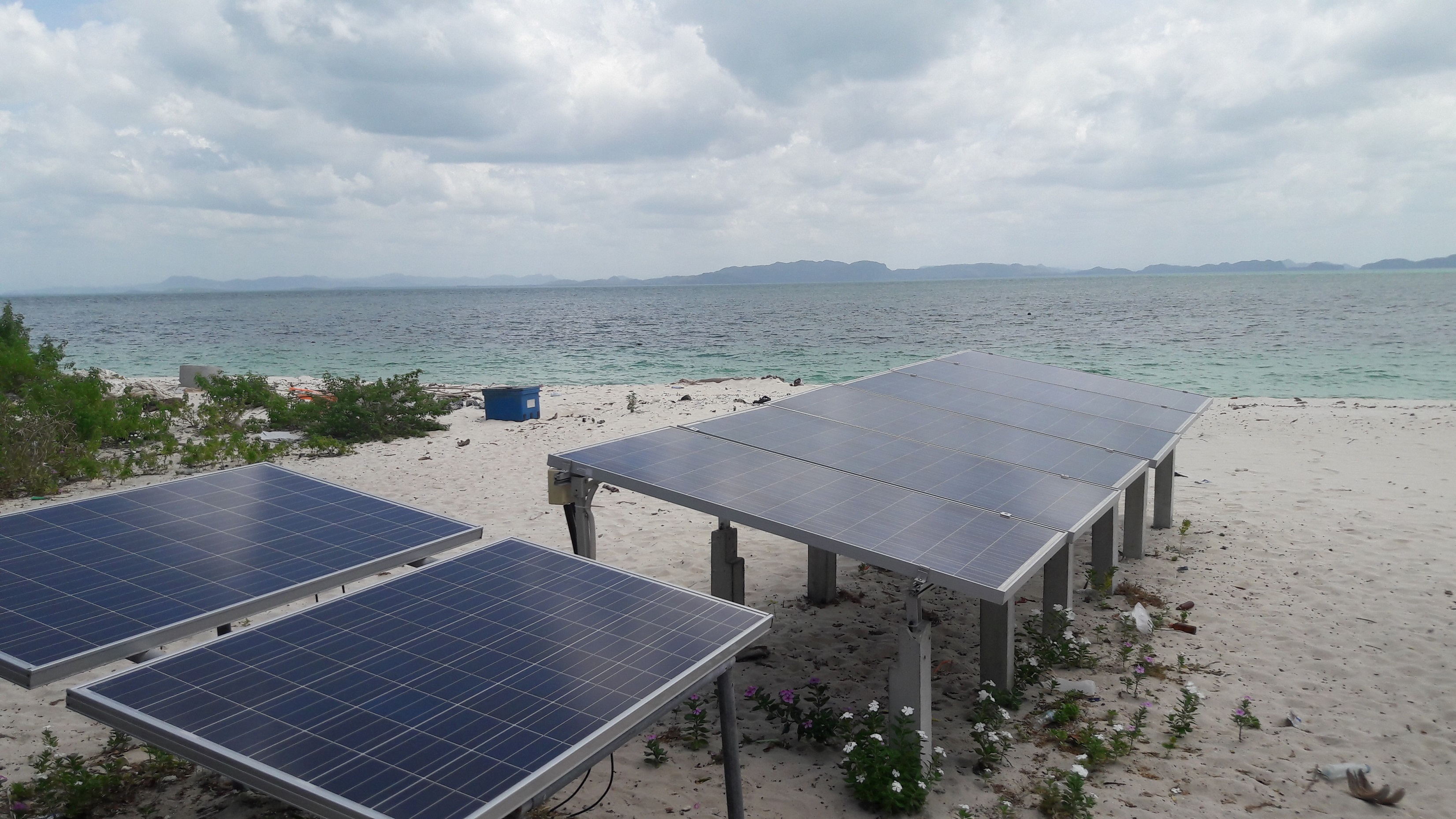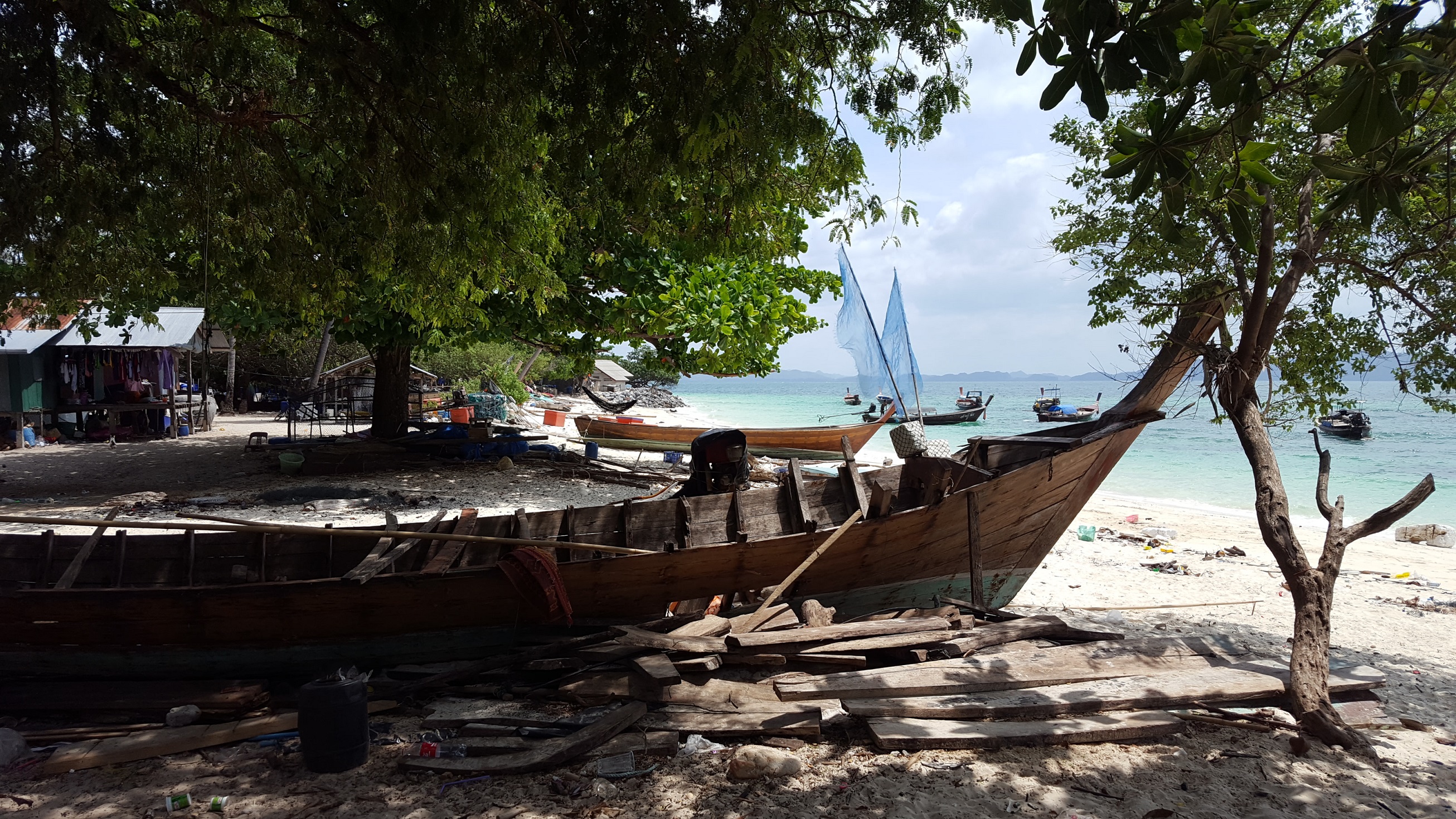Mini grids, mega opportunites
[caption id="attachment_3180" align="alignnone" width="3303"]
 Renewable energy sources like solar and hydropower are commercially viable across most regions of Southeast Asia, as many island communities are using expensive diesel generation for electricity. Source: GIZ[/caption]
Renewable energy sources like solar and hydropower are commercially viable across most regions of Southeast Asia, as many island communities are using expensive diesel generation for electricity. Source: GIZ[/caption]Opening new markets: The IEA World Energy Outlook estimates that nearly half of all unelectrified rural areas globally will be most economically served by off-grid minigrids. Throughout much of Southeast Asia, village minigrids are commercially viable. A lack of financing for these projects remains one of the key barriers to seizing this economic opportunity to provide affordable electricity to unelectrified villages.
Global electrification has reached 85.3%, according to the Global Tracking Framework published at the Sustainable Energy for All Forum last month. The report warned that the growth rate of electricity access from 2012 – 2014 was not sufficient to meet the 2030 goal of 100% global electrification. The IEA estimates that by 2030, 91% of the globe will be electrified. If this estimate is accurate, the 1.06 billion people currently without electricity will drop to 760 million in 2030, well short of the 100% electrification target.
Based on analysis of Bloomberg New Energy Finance (BNEF), access to finance is the main barrier to growth cited by off-grid entrepreneurs. Thus far, most funding has come from impact investors and donors. To reach the 130 million people in Southeast Asia living without electricity, minigrid developers need access to mainstream forms of finance.
The economic opportunity for minigrid electrification already exists. International Finance Corporation (IFC) estimates that at least 30 million households globally could be served profitably by minigrids – a market of up to $4 billion. For the mini grid market to scale, players need to develop their business and operational models. Development banks and foundations should provide early stage financing to help companies scale, and governments must reform limits on foreign ownership to broaden the pool of financing options available.
Innovative business models
Obtaining finance to offer services to remote communities is challenging because customers often lack access to the financial documentation that comes with participating in the formal economy. Because of this, funders are hesitant to invest in village minigrids, as they can not access villagers’ credit histories. This lack of information makes it difficult for investors to assess villagers’ ability to pay for the quantities of electricity necessary to achieve an attractive rate of return.
Andre Susanto, a clean energy consultant at PT Inovasi Dinamika Pratama, which has conducted hundreds of assessments of village minigrids in Indonesia, reiterated this point. “Off-taker risk is one of the main challenges that village mini grid developers face.”
To help manage off-taker risks, developers can utilize an anchor-business-customer (ABC) model, where off-grid minigrids provide power to anchor loads such as telecommunication towers, agricultural or lumber mills, local businesses, and village customers. Developers can also enhance the use of electricity in the village by building communal village facilities.
Power Source, a village minigrid developer in the Philippines, builds a “Community Energizer Platform” which consists of centralized community facilities powered by electricity, such as water purification systems, communications equipment, refrigeration, small movie theaters, and other entertainment facilities. This infrastructure boosts the sale of electricity, making the minigrid more profitable.
In the long term, developing a business and operational model that works with the community is essential to enabling sustainable implementation of power systems while achieving an attractive rate of return for investors. To better understand which business models will work best in rural villages, German development agency Gesellschaft für Internationale Zusammenarbeit (GIZ) GmbH is conducting feasibility studies funded by the Rockefeller Foundation to hybridize two diesel minigrids on remote island communities in Thailand.
Through the feasibility studies, GIZ is partnering with private mini grid developers and investors. GIZ has conducted numerous interviews with members of the community to better understand what ownership structure and technical design will work best. Having a model that respects the desires of the community is essential, as an incompatible model will decrease revenue from the sale of electricity.
As with many remote villages in South-east Asia, the islands GIZ is working with already have some form of diesel-powered electricity, for which villagers pay at least $0.50/kWh. Thomas Chrometzka, Director of Renewable Energy at GIZ in Thailand, emphasized that “there is a commercial case to replace diesel generation with electricity from renewables, and especially solar.”
Analysis by BNEF supports Chrometzka’s assertion. In Southeast Asia, the cost of electricity from a private diesel generator ranges from $0.25 – $ 0.90/kWh for five to eight hours use per day. Adding solar PV to the mix brings this down to $0.25 – $0.45/kWh for 24/7 supply, according to microgrid developer Wenergy Global.
Chrometzka and his team are currently conducting the technical design of the mini grids, so have not determined how projects will be financed. Several options are under consideration, all of which aim to empower the local community to operate the system while receiving professional support from commercial players through long-term maintenance contracts. While the local community will ideally have ownership of the power system, GIZ is aiming to avoid a donation approach to allow for the replication of the model. To this end, GIZ is engaging with experienced project developers with a commercial interest in minigrids to see if they could offer a combination of debt and equity financing. Chrometzka has said that local banks are theoretically interested in the project, although cautious about how risk is distributed.
Commercial banks in Southeast Asia have thus far hesitated to offer financing for village minigrid projects. In its webinar Incubating Innovation for Rural Off-Grid Electrification, the World Bank explains that commercial banks emphasize the creditworthiness of customers when evaluating projects. Established anchor tenants like telecommunication companies have a strong credit history and so boost a project’s bankability. On the other hand, selling electricity to local businesses or villagers will not be as convincing, because they are typically considered less creditworthy.
As developers deploy more projects, they can use the repayment history of their existing portfolio to de-risk future projects. Effectively, developers are building their own credit history for villagers and local business, although building this track record requires sufficient funding to deploy the initial set of projects.
[caption id="attachment_3179" align="alignnone" width="3431"]
 Community meetings conducted by the GIZ are essential to understanding the needs and concerns of villages as minigrid projects are developed. Source: GIZ[/caption]
Community meetings conducted by the GIZ are essential to understanding the needs and concerns of villages as minigrid projects are developed. Source: GIZ[/caption]Stuck in the “missing middle”
In between $50,000 and $1.5 million in funding lies in what financiers refer to as the “missing middle” where funding sources are particularly scarce. Seed funders and impact investors can comfortably provide up to $50,000 to companies in the seed stage, though larger amounts are tricky. On the other hand, larger funders like development banks or private equity firms are looking for investments larger than $1.5 million, in part because the costs of due diligence on deals below $1.5 million are not attractive.
Village minigrids are often between 10 and 150 kW in size, depending on the village and additional commercial customers. A minigrid project in this capacity range will often cost around or above $100,000, landing it squarely in the “missing middle.” Gaining access to finance in the “missing middle” will be essential for the minigrid industry to scale. International development banks, governments, and foundations can play an important role here in the provision of financing. U.S.-based Overseas Private Investment Corporation (OPIC) has provided a $750,000 loan to Indian minigrid company Husk Power Systems, which builds village grids powered by rice husks. “OPIC has funded seven minigrids in India and Sub-Saharan Africa,” says Lynn Tabernacki, Deputy Vice President SME Finance & Head of Global Energy. “Under the Innovative Financial Intermediaries program, OPIC has also supported Sunfunder’s Beyond the Grid Solar Fund, which is able to invest in solar off-grid and minigrid companies.”
Deal marketplaces like Sunfunder, that link projects with investors, can also play an important role in providing finance. Sunfunder is one of the most prominent of several marketplaces that allow investors to invest in off-grid projects, though so far it has primarily focused on projects in Africa and India.
A new funding facility called the Microgrid Investment Accelerator was unveiled at the Sustainable Energy for All Forum last month. It will focus more on Southeast Asia. The facility was set up through investment firm Allotrope Partners and funded by Facebook and Microsoft. From 2018 to 2020, the Microgrid Investment Accelerator aims to deploy $50 million in financing in Indonesia, India, and East Africa.
In a statement, CEO Alexia Kelly said: “Microgrid Investment Accelerator will test the commercial opportunity for minigrids, and demonstrate how concessionary finance can unlock progressively larger proportions of private capital, as risks are discovered, priced, and mitigated.”
Microgrid Investment Accelerator aims to leverage grants and loans from foundations and development institutions, in addition to the capital it has raised to develop the financial ecosystem for minigrids.
In addition to development banks, foundations, and outside investors, governments can help to further catalyze investment in minigrids. Currently, the money governments in Southeast Asia have contributed has gone primarily to capital subsidies for minigrid projects. The government of Indonesia has paid for the building of around 500 minigrids since 2012. Likewise, as part of its National Electrification Plan, Myanmar has allocated $7 million to offer a 60% subsidy on village minigrids.
Rather than offering a subsidy on an investment that is already commercially attractive, governments should put in place programs like loan guarantees or risk-sharing facilities that can boost minigrid developers’ access to finance. These types of programs limit commercial lenders’ risk exposure through loss-sharing agreements on a loan or group of loans. Under the agreements, the government offers to reimburse a lender for a portion of losses. For example, the IFC has used risk-sharing facilities that guarantee 50% of the losses on a portfolio of student loans in Indonesia, up to a certain loss threshold.
[caption id="attachment_3178" align="alignnone" width="2612"]
 Fishing villages like Bulon Don in southern Thailand are well suited to mini-grid development as centralized grid extension is unviable. Source: GIZ[/caption]
Fishing villages like Bulon Don in southern Thailand are well suited to mini-grid development as centralized grid extension is unviable. Source: GIZ[/caption]Limits on foreign ownership
More important than providing additional funds to accelerate the financing of village minigrid projects, governments must reduce restrictions on foreign ownership.
In Indonesia, projects of 10 MW and up allow for 95% foreign ownership, projects from 1 to 10 MW limit foreign ownership to 4%, and below 1 MW, the law prohibits foreign ownership entirely. Since nearly all village minigrid projects are less than 1 MW, foreign developers need to find a local partner to finance all of their projects. In the Philippines, regulations are somewhat more favorable, as foreign ownership is limited to 40% for all system sizes. These financial regulations require local investors who can take ownership of a substantial portion of the project. Since most villages cannot pay for the equipment up-front, it is necessary to finance the project, and these regulations further limit an already limited pool of financing options. The restrictions on foreign ownership should be reduced or eliminated to allow minigrid developers to receive finance from foreign investors.
With over 130 million people living without electricity, the investment opportunity and potential for the impact of minigrid development in Southeast Asia is vast. Through a combination of business model innovation, scale-up funding to help companies cross the “missing middle” funding gap, and eased restrictions on foreign ownership, village minigrids can substantially contribute to reaching 100% electrification by 2030.

